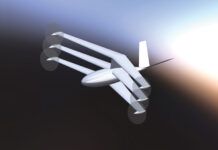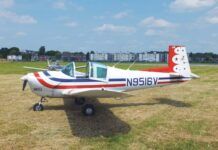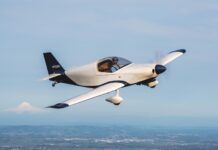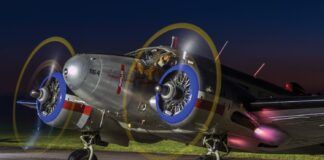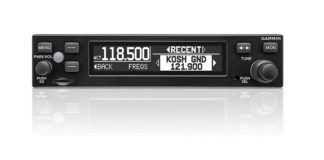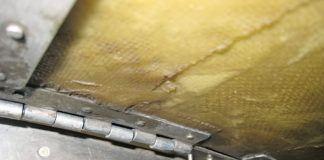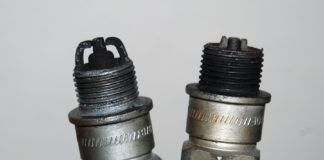Our look at longitudinal flying qualities continues this month with a few more flight-test procedures. We will also begin some analysis to start making sense of the data gathered in flight test.
Before we discuss our next flight-test procedure, there is one piece of potentially confusing terminology which must be clarified. The term trim or trimmed is used to describe two different situations, which are similar, but not identical. From the viewpoint of the aerodynamicist, an airplane is trimmed if the net pitching moment about the center of gravity is zero. This implies that there is no pitch acceleration, and the aerodynamic moments produced by the flying surfaces and other parts of the airplane are all in equilibrium about the cg. When used in this manner, the term trimmed does not take into account the stick force the pilot must exert to keep the elevator deflected appropriately to produce pitching-moment equilibrium for the airplane.
To the pilot, the airplane is not trimmed unless the stick force required to maintain a constant attitude or airspeed is zero. From the pilots viewpoint, both pitching moment equilibrium and control surface hinge moment equilibrium are required to be in trim.
Testing
We now turn our attention back to flight testing. One piece of equipment that can make taking data much easier is a small voice recorder. It is difficult to fly the airplane and take accurate notes, particularly if the airplane has a side-stick or similar one-hand-only controller that forces you to use the hand you would normally write with to fly the airplane. Dictating your observations into the recorder occupies only one hand and your mouth, and it requires no fine motor control. (I used a recorder during flight testing of the Facetmobile, and it made taking data much easier.)
Test 4:
Stick Force to Trim
The purpose of this test is to determine the stick force required to hold the airplane in trim at an airspeed other than the speed it is trimmed for. The results of this test, in combination with the results of the “stick position to trim” test described last month, will be used to help separate static margin effects from control surface hinge moment effects.
First, trim the airplane in straight-and-level flight at a moderate airspeed. Once the airplane is trimmed and airspeed is stabilized, perturb the airplane in pitch by either pulling or pushing on the stick. Stabilize the airplane at an airspeed a few knots different from the trimmed airspeed. Keep the perturbation small initially.
Once the airspeed has stabilized, feel (or measure) the stick force required to hold the off-trim airspeed. If you are flying faster than the trimmed airspeed, you should be pushing on the stick to keep the airspeed up. If you are flying slower than the trimmed airspeed, you should be pulling to hold the airspeed down.
If this is not the case, i.e., if you are flying faster than the trimmed airspeed and having to pull on the stick to hold airspeed, or if you are flying slower than trimmed airspeed and having to push on the stick to hold airspeed, then you have discovered a problem.
First and most important: Dont push your luck! Re-trim the airplane immediately if you can, and if you cant, immediately return the airplane to an airspeed where you can trim it. This is especially important if you are flying faster than trimmed airspeed and pulling on the stick. As airspeed rises, the stick forces can rise rapidly. Allowing the airspeed of an airplane with this type of problem to get much higher than trimmed airspeed could lead to a situation where a very large stick force is required to bring the nose up and regain trimmed flight. This may be dangerous because of the possibility that the stick force will get too high for the pilot to be able to recover.
An airplane with a reversed stick-force gradient is suffering from either a lack of static margin (true longitudinal instability) or from a condition known as speed instability, which is usually caused by control surface hinge moment characteristics. Which one it is can be determined by looking at the results from several of the tests we have been discussing. Later on, we will see how to analyze the data and form conclusions.
Test 5: Stick-Free Stability
The purpose of this test is to evaluate the stick-free stability of the airplane. Because this test involves releasing the stick in flight, it should only be done after the data from the tests described earlier have been analyzed.
If the stick of an airplane is released, the elevators will tend to float with the apparent wind. This reduces the lift-curve slope of the horizontal tail, making it less effective at stabilizing the airplane. If the elevators have a significant floating tendency, then the airplane will be less stable if the pilot is not holding the stick (stick free) than if the stick is held rigidly (stick fixed).
Warning: If your stick force to trim test showed any problems at all, or if the elevator position to trim data taken earlier does not show a stable variation of elevator position with trimmed airspeed, do not try the stick-free stability test because the airplane may become uncontrollable if the stick is released.
Conducting Test 5
First, trim the airplane in straight and level flight at a moderate airspeed. Once the airplane is trimmed and airspeed is stabilized, perturb the airplane in pitch by either pulling or pushing on the stick and then releasing it. Keep the perturbations small initially, until you see what the airplane is going to do. In general, it is better to start with a small nose-up perturbation, because the airspeed will be decreasing and the control forces decreasing, rather than a nose-down input, for which the opposite is true. Observe the behavior of the airplane to get the answers to the following questions:
1) Which way does the nose move after the stick is released?
The initial reaction of a statically stable airplane is to move to correct the disturbance. If the perturbation you put in was nose up (stick pull), then the nose should drop when the stick is released. The converse is true if the perturbation was a push, in which case the nose should rise when the stick is released.
If the nose continues to move in the direction of the initial perturbation, then the airplane lacks stick-free static pitch stability. The faster this divergence occurs, the more unstable the airplane is. If this situation is encountered do not sit by and allow the divergence to continue while observing the behavior of the airplane. This can be extremely dangerous, because the divergence could lead to loss of control, particularly if the divergent motion is nose down. Immediately take control and return the airplane to its original trimmed airspeed. If a divergence is found, even a mild one, discontinue all other stick-free testing.
2) How many pitch cycles does the airplane take to damp the pitching motion caused by the stick input? Usually this is of secondary importance unless the airplane has extraordinarily low damping.
Analyzing the Data
At this point in our testing, we should have enough data to form some preliminary conclusions about what is causing the airplane to feel pitch-sensitive to the pilot. From our tests, we should now have the following information:
1) Stick force per G
2) Stick travel per G
3) Curves of elevator deflection versus trimmed airspeed.
4) Stick force required to hold the airplane at off-trim airspeeds
5) First-order stick-free stability determination.
The Goal
Our goal in analyzing the flight-test data is to determine which of the two hypotheses about the cause of flying-qualities deficiencies (discussed last month) properly describes the situation. To review briefly, these are:
Hypothesis 1: The airplane lacks longitudinal stability. The static margin is too small (or negative), and this lack of stability is what is making the plane difficult to fly.
Hypothesis 2: The control system is giving the pilot poor feedback. Some combination of the elevator hinge-moment characteristics and the mechanics of the stick and control linkages is causing the feel transmitted from the elevators to the pilot to be unsatisfactory.
Both hypotheses could also be true, and the airplane suffers from both a lack of stability and a control-system problem.
Once the type of problem the airplane suffers from has been properly nailed down, then we can move on to ways to solve it.
Analysis
The first parameter to examine is stick force per G.
MIL F-8785C, which is the MIL SPEC for airplane flying qualities, gives the minimum acceptable stick force per G in maneuvering flight for airplanes with sticks as:
Min stick force per G = 12/(Nl-1) or 3 pounds per G, whichever is greater. Nl is the limit load factor of the airplane.
For an airplane with a 6-G limit load, this criterion gives 4.2 pounds of stick force per G as the minimum acceptable level.
If the stick force per G of the airplane is lower then the MIL-8785C specification, we know that there is a real longitudinal flying-qualities problem. Unfortunately, stick force per G alone is not enough to decide between our two hypotheses. There are myriad possibilities that must be considered. We go over these in detail later in our discussion.
On the other hand, if the stick force per G is equal to or larger than the MIL-8785C value (acceptable), then the problem is a little subtler than the case of too-low stick force per G, but there are fewer possibilities to examine. If this situation arises, we must look to the data on stick movement per G (Test 2) and stick force to hold an off-trim airspeed (Test 4) to determine the nature of the problem.
First, we consider stick force required to hold an off-trim airspeed (Test 4). In most cases, it will take a push force on the stick to hold a higher than trimmed airspeed and a pull force to hold a lower than trimmed airspeed. If this is not the case, then the airplane suffers from speed instability.
Figure 1 shows example results from Test 4 for a hypothetical airplane. The only difference between the two airplanes shown is the floating tendency of the elevators. As you can see, one airplane is speed-stable and the other is speed-unstable. Increasing the floating tendency of the elevators is destabilizing. Speed instability can occur on an airplane that has stable stick-fixed static margin, which accounts for the fact that the stick force per G may be acceptable even if the airplane is not speed-stable. An airplane that is speed-unstable will show some divergence in the stick-free stability test (Test 5) due to the destabilizing effects of elevator floating.
If the results of Test 4 show that the airplane is speed-stable, we then turn our attention to the control linkages and the results of Test 2. It is likely that we will discover that the control gearing is such that it takes a relatively small motion of the stick to deflect the elevators. This can cause the stick movement per G to be small. This situation is much more likely to occur on airplanes with powered controls than on airplanes where the pilot is mechanically linked directly to the controls.
If the stick movement per G is too small, the pilot may find the airplane feels sensitive even though the stick force characteristics are acceptable.
Summary
So far, we have seen that if the stick force per G is acceptable but the pilot feels it is too pitch sensitive, the airplane may be suffering from a speed instability, which is primarily an aerodynamic problem related to the control-surface design or to improper stick-to-elevator gearing.
The other situation, where stick force per G is too low, will be the next subject we cover. Once we have established how to determine the root cause of a longitudinal flying-qualities problem, we will move on to a look at some of the approaches to curing it.
Barnaby Wainfan’s day job is in aerodynamic design for Northrop Grummans Advanced Design organization where he is a principal engineer. A private pilot with single engine and glider ratings, Barnaby has been involved in the design of unconventional airplanes including canards, joined wings, flying wings and some too strange to fall into any known category.

